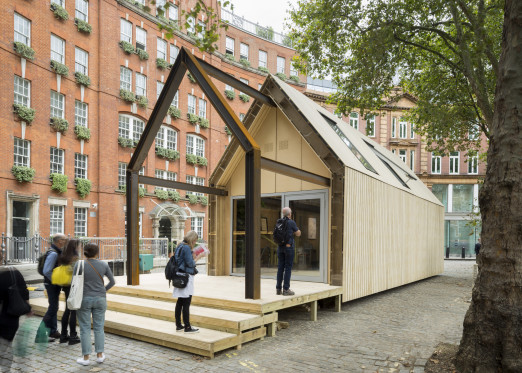i-Cover, a multi-functional prototype façade, enables solar energy harvesting through adjustable modules. It is designed for disassembly and to minimise material use. The modules can be fitted to meet contextual energy requirements of different buildings – the building’s energetic profile is evaluated by a configurator, which then determines an optimal distribution of the modules across the envelope. This façade provides sun protection, whilst preserving interior visual comfort. In addition, it facilitates a number of functions, such as temperature control, thermal and electric energy generation, and biomass production.
Loop / Optimise
Multi-functional Energy Façade, FRENER & REIFER, Research Partners, (Designed for disassembly Bressanone Italy, 2016)
FRENER & REIFER GmbH/Srl was founded by Georg Frener and Franz Reifer in 1974. The company has 160 employees: engineers, architects, technicians, specialists, craftsmen, foremen, sales, marketing and administration personnel.
Their headquarters are in Italy, whilst branches in Germany, France, UK, Switzerland and the USA guarantee on-the-spot service.
Interview with FRENER & REIFER
Could you tell us a little bit about the kinds of fabrication your company provides for buildings?
FRENER & REIFER: As a solution developer, FRENER & REIFER engineers, fabricates and installs bespoke constructions in glass, metal and other materials for demanding clients and investors to designs by daring architects, worldwide. We have three in-house production departments: prefab assembly, sheet metal processing and steel fabrication.
To what extent are ideas around the Circular Economy part of your company vision?
FRENER & REIFER: The topic of Circular Economy has become increasingly important for FRENER & REIFER in recent years, particularly in the business sector "Iconic Architecture" which today naturally demands the proposal of sustainable solutions. We are ISO 14000 environmentally certified. This certificate recognises that the good environmental policy of the company is administrated via an environmental management programme and involves compliance with the relevant environmental laws.
In addition, Iconic Architecture clients increasingly demand construction to internationally certified system standards such as LEED or BREEAM i.e. evaluation systems for the environmental and socio-cultural aspects of the sustainability of buildings.
Could you tell us a little about the challenges of design for disassembly?
FRENER & REIFER: We have always designed, fabricated and installed with the goal of longevity in mind (the company has already paid attention to the easy disassembly and recyclability of components, for example. The challenge today lies above all in the components with which we are supplied. A good example is laminated glass where the glass is already bonded, thus making it difficult to trace and/or separate.
What inspired the research and the prototype?
FRENER & REIFER: Our inspiration for I-COVER was the desire to develop a classic building envelope with easy to dismantle or upgrade energy-supplying modules: i.e. an energy-producing, energy-saving and recyclable facade with an inherent positive energy balance across its overall life cycle.
How might this be developed at a larger scale?
FRENER & REIFER: A basic understanding of energy life cycle considerations in the construction industry first needs to be established in order to enable the development of new business, supplier, and operating models.
What has been the reaction so far?
FRENER & REIFER: Due to the still relatively high costs involved, direct benefits resulting from a holistic energy life-cycle approach have unfortunately not yet been recognised. Awareness needs to be raised that financial and energy balance benefits do follow and that these are felt in the medium to long term rather than being short term returns.
Next Steps?
FRENER & REIFER:
1. Realisation of a pilot plant on a larger scale.
2. Monitoring and evaluation of measurement results in comparison with existing simulation results
3. Further development and optimisation of new business models
For anyone interested in this field, what books or articles would you recommend to read?
FRENER & REIFER: Currently, there is very little literature on this specific subject. It is possible to find some interesting and comprehensive theses and dissertations dealing with this issue – however, these have bibliographies tending to list more general works on sustainable façades and are usually subject to non-disclosure agreements.
For more on FRENER & REIFER click here


